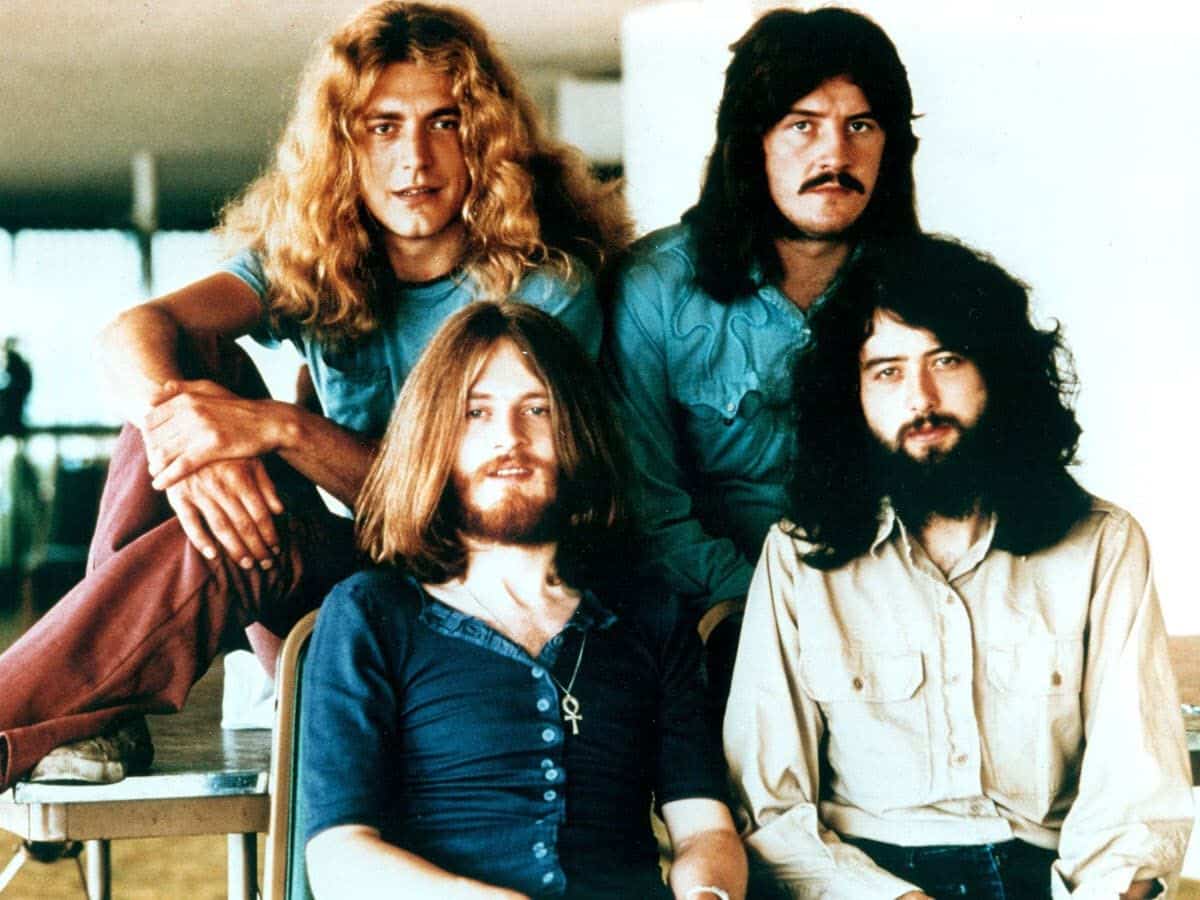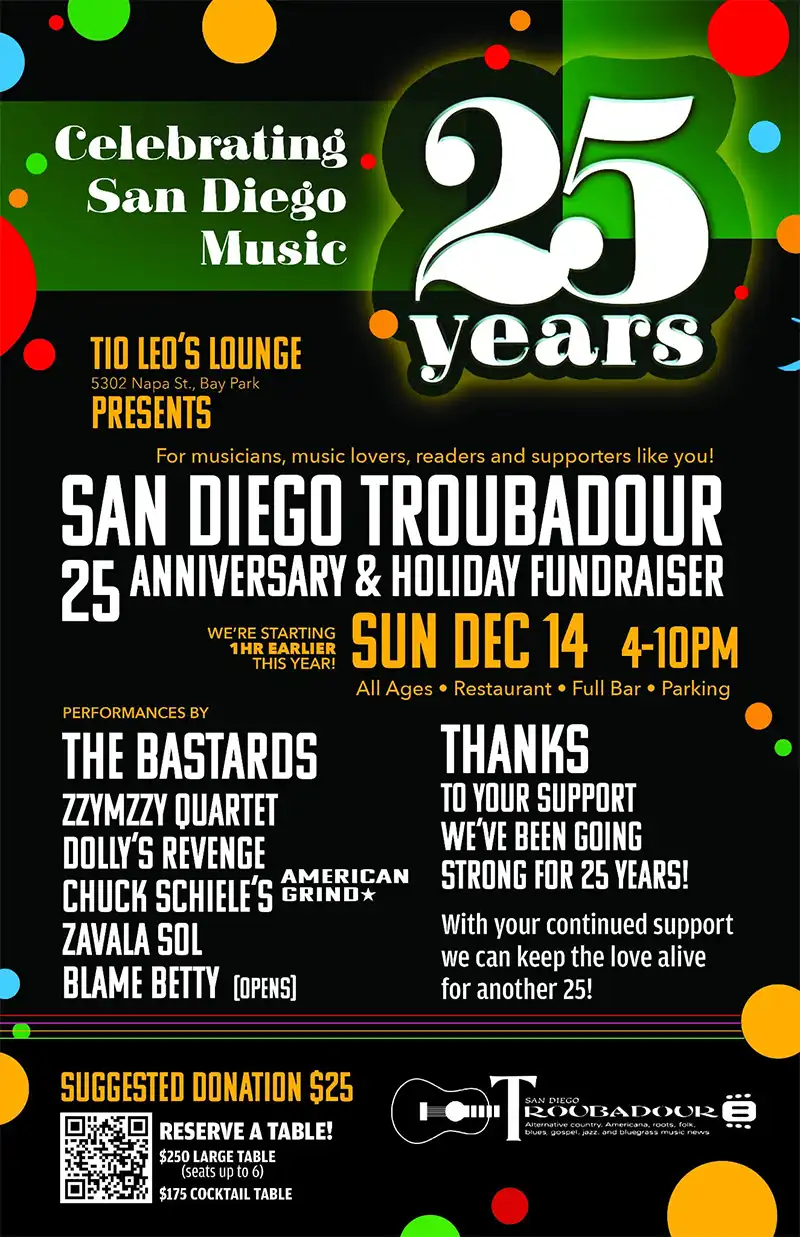Raider of the Lost Arts
Led Zeppelin

Led Zeppelin: John Bonham, Jimmy Page, John Paul Jones, Robert Plant.
They were the four winds and corners of the globe to which the wizard guitarist often pointed his bow, each member bringing a more than fully realized and multifaceted quotient to an even larger whole. Their music was an unprecedented, unrepeated, inimitable, and seamless mélange of similarly all-encompassing eastern and western flavors, from the blues, jazz, country, and rock ‘n’ roll of Memphis, Nashville, and the Mississippi Delta, the folk traditions of Laurel Canyon, Greenwich Village, and Tolkien’s England, to the eastern mysticism of India and Morocco. And yet they were so much more.
They and their retinue were a pirate horde, extorting their just rewards by force from an industry that typically treats its indentured artists like cheap whores. The sins of their brazen, mostly unattributed plagiarism can be weighed in the posthumous balance by not only the wildly original, timeless, and myriad masterpieces they themselves created, but also in the way they completely and irrevocably repossessed the scant little they did surreptitiously appropriate.
Their audience was a dazed, devoted mass, initiated into a secret club with a clandestine generational code, separate but not below, and also an integral part of the larger whole. Their band was both a semblance of and antidote to the sixties hangover, reflected in the promise of Woodstock’s utopia broken by Altamont’s disaster, torch carrier of the monolithic Beatles into a more jaded and less innocent era that now craved more breadth, depth, and dynamic power and spectacle in their live and recorded divertissements.
Masters of light and shade, pioneers of long-form, album-oriented rock epics, they were the mighty, one and only Led Zeppelin, and they will be forevermore.
**************
Like a newborn foal that drops to the ground and soon after walks, all of Led Zeppelin’s essential characteristics and raw power were there from the get-go. The first electrifying, giddy-grin-evincing rehearsal brought together two seasoned London session musicians with a younger pair of backwoods blues prodigies to ignite the big-bang explosion of hard rock that would echo well into the seventies and beyond.
James Patrick Page (b. January 9, 1944), the catalytic mastermind behind the assemblage, brought an already well-versed, refined, and unbiased love for many different types of music and apropos guitar styles necessitated by the studio work in which he had been gainfully engaged, and stemmed from an ever curious receptivity that had also prompted him to pay attention to and effectively absorb the tenets of production and engineering witnessed at countless sessions. Having grown tired of that treadmill—and also fed up with being a hired gun in someone else’s group (The Yardbirds, which had also provided a proving-ground platform for several other high profile guitarists)—Page began to broadcast the intention of forming an ensemble that could become an ideal vehicle for his own grandiose vision.
Fellow session man John Paul Jones (originally Baldwin)(b. January 3, 1946), the only member to use an alias (and the only one who came out on the other side unscathed), caught wind of Page’s machinations first and proactively threw his hat in the ring as a master multi-instrumentalist (fretted and fretless basses, 8-string bass, upright bass, bass pedals, piano, organ, Mellotron, synthesizer, six- and twelve-string acoustic guitar, and mandolin) and adept arranger who had also grown tired of the financially stable but aesthetically staid hamster wheel of London studios.
John Henry “Bonzo” Bonham (May 31, 1948–September 25, 1980) and Robert Anthony Plant (b. August 20, 1948) came from the west Midlands as already battle-hardened veterans of various regional bands. Both were possessed of the kind of tempered raw power only serendipitous genetics and hit-the-ground-running refinement can bestow, and both ended up as pioneers in their respective roles as a result, as no high profile precedent yet existed. What’s more, each possessed a multifaceted versatility in their own right, with Bonham able to either groove enormously in the pocket like no other drummer before or since, or bring his instrument to the forefront as a renowned soloist (and oh yeah, he could also sing close harmonies with Plant on select songs, most notably “Bron-Y-Aur Stomp” and during the a cappella breakdown on “The Ocean,” and with Plant adding not only another instrument––harmonica––to the more authentic blues-rock stew but also setting the new standard for frontmen as the rightfully self-proclaimed “Golden God,” with his leonine beauty––replete with bared chest and anyone-can-see-his-religion crotch bulge––on full unabashed display. As a result of this attractive magnetism embodied by Plant and also Page, Led Zeppelin drew more female punters than one would think possible for a hard rock band (and as everyone had learned from the Beatles, Elvis, and Sinatra, the money is where the women are).
Also already in place, thanks to Page’s time served in the Yardbirds, was manager-cum-gangster Peter Grant (April 5, 1935–November 21, 1995). Heavy-set in both his ex-professional-wrestler physicality and concomitantly forceful personality, Grant guarded his charges with the borderline felonious fierceness rarely seen in the music business before or since. The record deal with which he steamrollered Atlantic’s Ahmet Ertegun is the one every great band should have, as it put the balance of power squarely with the barely tested but already totally realized Led Zeppelin in the form of a higher than usual royalty rate on a multi-album deal, and with full artistic control thrown in for good measure. Another related and equally significant concession Grant secured was Atlantic’s blind acceptance of Jimmy Page as the as of yet unproven producer of their records.
(On the concertizing front, Grant would manage to force hands and broker a similarly favorable deal with venues and promoters, who were given the lower share of the door receipts, which was more often what the artists received. And woe betide any nefarious producers and distributors of unauthorized band merchandise! Tales of Grant ferociously taking bootleggers to task are an integral part of Zeppelin’s buccaneer lore.)
By the time the fledgling phenomenon group hit London’s Olympic studios to record their fabled major label debut in October 1968, they had already amassed enough suitable original and cover material for a cohesive long-playing album, had some touring experience under their belts during which they had honed said material (and whatever controlled chaos happened within it), and had all but gelled as a unit, enabling them to complete the entire process in just the 30 cumulative hours for which they were billed.
Page and Grant had the leverage-bestowing shrewdness to pay for the studio time themselves, so that when the opportunity did arise to approach a label they wouldn’t have to ask the record company for anything other than manufacture, promotion, and distribution of what would eventually come to be known as Led Zeppelin I. Additionally, whoever ended up signing them would have to accept the finished album as is, since it was already in the can. Not needing as much help from a record company would definitely give the band an enticing bargaining chip, but the initial investment would also have the fine-print benefit of getting all the extra pork past Atlantic’s accountants. The band would do the rest, with its spectacle-laden, sure-thing live show and hard-rock-christening intensity firmly in place, and they would do it quickly to the vast benefit of all involved.
(Later, this dividend-coveting, production-value-increasing frugality would manifest in their opting to bypass the exorbitantly expensive and often excessively sterile studio environments of London in favor of more affordable options like the vibe-laden manor house Headley Grange, where they brought in studio gear––and Page’s adopted distance-equals-depth miking techniques––to utilize and capture the deep, natural reverb of the lobby stairwell for the gigantic drum sound on “When the Levee Breaks,” for instance.)
It was a good call (though somewhat antithetical, as Page was single-averse) to put the self-penned, surprisingly poppy “Good Times Bad Times” as the lead-off track on Led Zeppelin I, as it set the precedent that this band was going to be hanging their hat on the rack of their own sound and contemporary compositional efforts, not leaning on their adroit appropriation of archaic music. Everything is in there, from Page’s stand-alone riffs and incendiary solo runs, Plant’s burly vocal hooks, and Jones’ complementarily roving bass motifs to Bonham’s eclectically heavy groove and unprecedented sixteenth note triplet kick-drum stutters (an effect which, for his contemporaries, usually necessitated the simultaneous working of two separate kick drums). The lyrics would get there eventually, but “Good Times Bad Times” and others of its type (i.e., “Since I’ve Been Loving You,” etc.) show substantial imagination in their depiction of a cuckolded narrator railing indignantly in blues-trope clichés against a profligate lover, when in reality Plant was already married with children and about to head off to America, where he would find himself neck-deep in an interminable stream of groupies. (“I know what it means to be alone”? Right.)
“Babe I’m Gonna Leave You,” a folk tune written by Anne Bredon and popularized by Joan Baez almost a decade before, encapsulates several facets of the Zeppelin formula that would prevail across the rest of their oeuvre. For a start, it’s an unexpected, somewhat counter-intuitive choice for a record’s second track, ergo a nice curveball surprise adding to the album-as-art-form’s world building. It’s a predominantly mellow acoustic piece clocking in at almost seven minutes (most of the nine songs are well over the three minute pop cap, setting an instant standard for the album-oriented rock format, and signifying the band’s improvisational and theatrical proclivities for milking every last drop of dynamic and thematic excitement out of the material in concert), which fully explodes during the interludes and outro. This song, “Dazed and Confused,” and “How Many More Times” would establish a precedent for what might be called a “set piece,” a song arrangement so long, elaborate, and cinematic in scope and production as to be a continent unto itself, almost like an album within an album. This would manifest throughout the discography in masterpiece epics like blues fugue “Since I’ve Been Loving You,” dynamically brilliant but overplayed-to-cliché generational anthem “Stairway to Heaven,” fusion standard “The Rain Song,” the cinematically ominous “No Quarter,” Delta slide-guitar odyssey “In My Time of Dying,” desert paean “Kashmir,” the by turns despairing and hopeful, opium-den sleaze of “In the Light,” the down-but-not-yet-out rallying cry “Achilles Last Stand,” the cathartic lounge blues of “Tea for One,” and finally the sprawling, synth-drenched “Carouselambra.”
“Babe I’m Gonna Leave You” is also the first assertion of the light-and-shade, multi-genre, and wide-amplitude dynamic imperative that would go on to spur the proliferation of other acoustic-incorporating numbers like “Thank You” and “Ramble On” from Led Zeppelin II, continuing through the predominantly unplugged Led Zeppelin III and the more modestly blended IV with “Friends,” “Gallows Pole,” “Tangerine,” “That’s the Way,” “Bron-Y-Aur Stomp,” “Hat’s Off to (Roy) Harper,” “The Battle of Evermore,” “Stairway to Heaven, “ and “Going to California,” manifesting on Houses of the Holy as “The Rain Song” and “Over the Hills and Far Away,” and finally ending on Physical Graffiti with “Boogie with Stu” and “Black Country Woman.”
“You Shook Me,” though not as much the aural equivalent of blackface as Led Zeppelin II’s “Bring It on Home” or III’s “Hat’s off to (Roy) Harper,” is the inaugural blues appropriation to wit, and features the first of many production innovations on Page’s part (backwards reverb, where the tape is flipped when the effect is applied, gave the treated vocals and instruments an otherworldly aura that evoke Page’s subsequent immersion in the occult, the creation of his Zoso Capricorn symbol for Led Zeppelin IV, and an obsessive fascination with the life and effects of infamous English occultist and libertine Aleister Crowley), Page and Plant’s trademark unison and call-and-answer runs, Plant’s blues harmonica, and MVP Jones’ criminally underrated, song-serving multi-instrumentality (bass and Hammond organ). The breakdown call-and-answer vocals feature some of the highest chest voice singing Plant or anyone else would ever attempt, setting the stage for subsequent songs like “Communication Breakdown” and “How Many More Times” later on the album, and “The Lemon Song,” “Immigrant Song,” “Friends,” “Out on the Tiles,” “Black Dog,” “Rock and Roll,” and “Four Sticks” down the line (though just about any track off the first six albums could fit this bill).
Jake Holmes’s “Dazed and Confused” (and to a lesser extent, the Howlin’ Wolf-derived “How Many More Times”) had already cemented Page’s bow-wielding reputation as an arcane musical alchemist and mage as far back as the Yardbirds, and was the first Zeppelin cut to signify the progressive leanings embodied in subsequent pieces like “Out on the Tiles,” “Black Dog,” “Stairway to Heaven,” “Four Sticks,” and the mostly 9/8 “The Crunge” in terms of their use of odd time signatures, Lennon-esque shortenings of phrases, janky syncopations, Hendrix-adjacent jazz freakouts, and rhythmic modulations. The mostly triple-metered tune would quickly become a showcase track not only for Page and his work with the cello bow, which he took to new, almost Wagnerian heights, but also for the band as a whole through the ever-expanding and evolving arrangement that extrapolated an often 20-minute-exceeding, emphatically explosive live version from the album iteration’s subtler sections.
Plant once said in an interview something to the effect that each of the four members had their turn steering the ship, and even the unassuming, support-relegated, feloniously overlooked utility man Jones would come to the forefront on Led Zeppelin I with “Your Time Is Gonna Come,” executing a nice long organ intro––and thereafter covering the bass line simultaneously with his feet!––that would lay the tracks for the you-don’t-notice-until-it’s-pointed-out genius of his parts on subsequent songs like “Since I’ve Been Loving You,” the all but self-contained “No Quarter,” the sublimely orchestrated “Kashmir,” and the boogie-rock concerto “Trampled Under Foot.” These are massive compositional and concertizing accomplishments in and of themselves, until one realizes that Jones also pulled off stunts like adding mandolin, bass pedals, and a third vocal to “That’s the Way” on stage, and both 6 and 12 string acoustic guitar and bass pedals to “Ten Years Gone,” among other songs (if you look at old show photos and videos, you’ll see him with various triple-necked guitars used to facilitate such feats)! Each member was no doubt one quarter of Zeppelin, but Jones is even now the un(der)sung 25% because what he brought to the table––the space he subtly filled––was predominantly, unwaveringly supportive (even though it occurred across the widest frequency range). No offense to Page, but if that support had been removed, especially live, punters would have heard and felt a glaring, gigantic void in the soundscape.
Jimmy Page takes the helm on the instrumental sojourn “Black Mountain Side,” a Bert Jansch-derived acoustic guitar interlude bursting with the east-meets-west fusion of sounds (tabla drums played by Viram Jasani––one of only two outside musicians to appear on a Zeppelin album––provide an Indian-adjunct, hemiola’d accompaniment for the guitar’s extensively modified accordatura) that would manifest later in similarly exotic-sounding numbers like “Friends,” “Kashmir,” the like-minded solo piece “Bron-Yr-Aur,” and “In the Light,” and in some of Page’s live improvisations and studio leads. Even on this cover of a cover (Jansch had nicked it from a traditional Irish folk melody), one can feel the self-containment of Page’s all-encompassing musical vision, with stand-alone melodic content and low-end reinforcement that required no backing (he generally wasn’t leaving anything to his bandmates in the writing process; “The Song Remains the Same,” for instance, was initially composed as an exclusively instrumental overture called “The Campaign” until Plant butted in with his vocals), though he did overdub a brief solo.
“Black Mountain Side” is also the first manifestation of Page’s assimilation of the altered guitar tunings of various blues and folk influences that would show up in several subsequent numbers (including companion instrumental “White Summer”). Though he spent more time in standard tuning (E A D G B E), D A D G A D and others he had gleaned from both the jazz-folk of Joni Mitchell and the juke-joint blues of Robert Johnson—and reinforced by the hundreds of hours of studio work—would become somewhat of an obsession for Page, who was always on the lookout for anything that would give his compositional imagination an eclectic edge and enhance his 6-string sorcerer’s mystique. D A D G A D not only widens the available pitch range but also gives the guitarist access to more evocative intervals and chord voicings that are miles beyond the purview of standard tuning (try playing “Kashmir” or “In My Time of Dying” in E A D G B E and the attempter will be indubitably thwarted). The Danelectro guitar he left in D A D G A D (and also D A D G B D, an open G chord similar to what Keith Richards put to ample use with the Rolling Stones) added to the sonic grandeur in its sitar-esque, transistor-y timbre.
**************
Though much of their music could be considered timeless, Led Zeppelin was very much a band of its time. If the road hadn’t killed John Bonham (and by extension, the band itself), the eighties would have; already perceived as bloated-relic dinosaurs by the early-punk release of 1976’s The Song Remains the Same soundtrack and accompanying self-indulgent but still exciting puff-piece film, and even despite the reactively stripped-down Presence, which also came out that year, the drummer and band’s bombastic sound would have found itself incongruent with the more subtly nuanced new-wave and dream-pop romanticism coming out of England and beyond (Alex Van Halen and Phil Collins came the closest to emulating Bonham as laudable acolytes in their respective bands). Anyone who caught their set or watched footage from the 1979 Knebworth festival could see they had become aged and bruised cavemen frantically flailing about inside the Louvre, anachronistic bulls in the music industry china shop, a once mighty mammoth backed in a corner and frozen into the glacier of history along with their incoming karma and all of the excesses that had once defined them and that they themselves had helped define. They––a visibly aged, vocally degraded frontman; a sloppy-fingered, pallid, smacked-out guitarist; a bloated drummer who would die of homesickness-alleviating alcoholism just over a year later; and a hapless multi-instrumentalist and arranger who had for a fleeting moment held and immediately dropped the ball with his cheesy musical mores (In Through the Out Door suffered mightily under his schmaltzy, decidedly uncool leadership in Page’s doped-up absentia)––had gone as far as they could under their unsustainable ethos, and were visibly––and legally––atoning (the fallout from the 1977 Oakland dust-up and other perpetrated corporeal violence could no longer be avoided, and plagiarized artists were coming out of the woodwork for their settled-out-of-court royalties).
The current musi-cultural climate is the exact opposite of how things were in Zeppelin’s laissez-faire prime. Whereas the contemporary scene revolves around shallow, poorly educated, too-early-groomed solo artists releasing overproduced, over-edited, robotic disco singles and filming themselves to death in the mystery-destroying promotional process, using backing tracks at the live performances, and a disproportionate emphasis on image over watered-down, often mumbled songs, Led Zeppelin were an all-in, pedal-to-the-metal, press-shunning, character-rich, mystique-laden, album-oriented force of collective nature whose live shows were earth-shaking spectacles that walked the for-better-and-worse unedited tightrope between perfection and folly (to paraphrase Page, “I deal in emotion, not technique”), pulled no punches, and made attendees feel like they too were part of the history they had just witnessed. There’s absolutely no way, in this crisis era of the Offended Individual (so much of Plant’s and the band and crew’s lyrical and lifestyle-imbued braggadocio is now redolent of a hushed-up, embarrassingly chauvinistic mudslide of “Me too” revelations and declassified mob-style fisticuffs), that a band like Led Zeppelin could possibly exist now, let alone become the biggest act on the planet.
The major label system, which they helped shape as the “it” band of the seventies, first with Atlantic and then via their own vanity imprint (Swan Song), is also nowhere near a semblance of what it once was, other than it being as exploitative as ever, if not more so. Now even more unwilling to take chances on undeveloped artists (ironic, considering Zeppelin emerged from Zeus’s cranium fully formed), much less quartets of male virtuoso marauders who would obviously become a liability (the scandals of Page’s underage-favoring love life and Bonham’s Jekyl and Hyde, spoiling-for-a-fight proclivities aided and abetted by crew and management alike would scare off every tour insurer now), and having fully transitioned from the once profitable record-store model to pittance-revenue streaming, the modern music industry would hold no place for an ascendant Led Zeppelin, who would middle-finger-reject today’s extant industry and inattentive, cell-phone-addicted listenership in kind.
The ironically, chronically detached connectivity of this modern age is offset by the since-1970-doubled world population that has been tempered by experience and socialization on both sides of the earbuds to go it alone, losing themselves in the production and consumption of a burgeoning sea of all too readily available songs that feel more textural than substantial. The scant few that do rise to the surface of the pop ocean and give the people what they want now are mostly attractive young women singing about infatuation and heartbreak in a way that is predictable, surprise-free safe, and utterly soporific, and contribute nothing unique to a deeper discourse (and though Zeppelin were sometimes guilty of this, perhaps more so in the early days, they at least had other assets on tap). As with the current political regime in the US, the people receive the entertainments they both wish for and deserve, and this modern world doesn’t deserve Led Zeppelin.
The way Zeppelin should be enjoyed now is the way they wanted you to enjoy them half a century (!) ago: within the time-honored ritual of pulling the 12 5/16-inch vinyl-protecting and enhancing gatefold sleeve off the shelf, being immediately confronted by the stunning artwork you can actually see and experience along with the music, extracting the fragile disc from the elucidating inner sleeve (which often contained lyrics and edifying––yet not demystifying––album credits), and placing it carefully, reverentially on the turntable, lowering the stylus, and listening to the album in its 40-plus minute entirety via speakers or headphones with undivided attention. This all seems like a laughably quaint notion in our modern ADD age, considering the pathetic 35-second focus limit statistic that recently came to light via YouTube analytics.
If you’d rather have visuals to stare at, go see the still in-theaters documentary Becoming Led Zeppelin about their shot-out-of-a-cannon early days on an IMAX screen near you, or seek out clips from––or the entirety of––2003’s DVD, or investigate it and other live and rare TV-appearance footage of the band that has resurfaced on YouTube since the site’s inception almost two decades ago. Either way, you’ll be astounded by the sheer creative spectacle and prodigious power of a band that has rightfully, volubly, and indelibly carved its name into the G.O.A.T. tree of rock and roll history.
Simeon Flick is an award-winning music journalist and a decades-long contributor to the San Diego Troubadour, as well as a San Diego Music Award-nominated singer-songwriter, multi-instrumentalist, classical guitarist (he holds a Bachelor of Music in Classical Guitar Performance degree from the University of Redlands), and home studio owner and operator. He lives in La Mesa with his wife Allison and their two cats, Louis Winthorpe III and Billy Ray Valentine, Capricorn.






